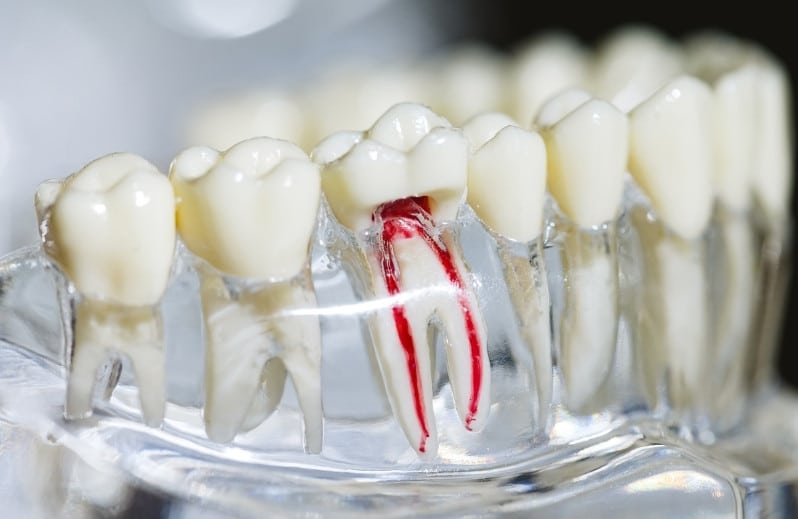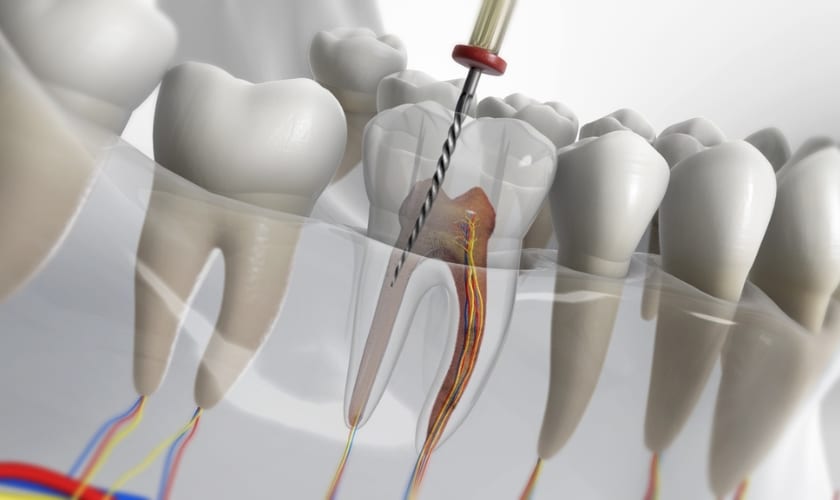
February 28, 2025
A root canal is a very popular and effective option to save a tooth from extensive infection and restore its natural function. Although the success rate is very high, there are instances when a root canal also gets infected. There can be multiple reasons why a root canal gets infected.
If you recently had a root canal and suddenly experienced complications with the treated tooth, it might be an infection. You should not ignore the signs or the situation can turn worse in the future.
In this blog, you will get to know how to identify a root canal infection, what the signs are, and how you can treat the infection for a full recovery.
What Are the Signs of an Infected Root Canal?
An infected root canal may not produce immediate symptoms, but there are specific warning signs to pay attention to:
- A dull ache or constant throbbing, especially after getting a root canal.
- Swelling in the gums, especially around the treated tooth.
- A feeling of pain, especially when you try to bite or chew something.
- A pimple-like swelling on your gums. Along with this pus, you also might get a bad taste in your mouth.
- If you feel the infection is moving beyond your tooth and you are feeling tired constantly, it is wise to consult a professional.
What Are the Immediate Steps to Take For an Infected Root Canal?
If you suspect any of the above signs, be aware. An infected root canal can be dangerous if not treated properly. Here’s what you should do:
Contact Your Dentist ASAP
- The earlier you visit a professional, the greater the possibility of saving your tooth.
- Describe your symptoms accurately and request an emergency appointment.
Rinse with Warm Salt Water
- Combine half a teaspoon of salt with a glass of warm water.
- Swish gently for 30 seconds to decrease bacteria and inflammation.
Take Over-the-Counter Pain Relievers
- Ibuprofen or acetaminophen can relieve pain and swelling.
- Take these medicines according to the instructions and avoid aspirin if there is bleeding.
Try a Cold Compress
- Place a cold pack outside your cheek for 15-20 minutes.
- It decreases swelling and gives temporary relief.
Avoid Chewing on the Affected Side
- Prevents additional irritation and trauma to the treated tooth.
- Stay on soft food until you have treatment.
The above steps may not heal the infection but will ease your symptoms until you get professional help.
What Are the Treatment Options for An Infected Root Canal?
Your dentist will decide the best option depending on the extent of the infection.
Root Canal Retreatment
- The infected tissue is extracted, and the tooth is disinfected once more.
- A new crown and filling are put in to close off bacteria.
Apicoectomy (Surgical Root Tip Removal)
- If the infection continues even after retreatment, you might need a minor surgical procedure.
- Here, the infected tissue and root tip are removed.
Tooth Extraction
- If the infection is severe and the tooth cannot be salvaged, it might have to be extracted.
- A bridge or dental implant can be used to fill the vacant space.
Antibiotics
- Where the infection has extended past the tooth.
- It helps regulate the bacteria before other dental treatments.
An infected root canal is painful and daunting, but you can save your tooth with immediate action. Identifying the signs, getting urgent dental care, and receiving the correct course of treatment are crucial for recovery. If you think there is an infection, don’t hesitate to call your dentist and take action to safeguard your oral health.
Do you want to know more about having a healthy smile? Book an appointment with our dentist today!






